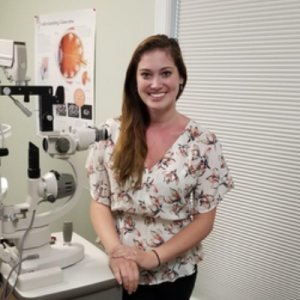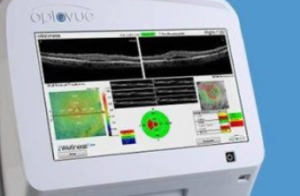According to the Oxford Handbook of Ophthalmology over 2 billion people are affected by refractive errors worldwide – that’s as much as 25% of the world’s population.
Refractive errors occur when light entering the eye is not clearly focused on the retina, at the back of the eye. This happens as a result of the shape of the cornea and lens inside the eye and the length of the eye overall.
A refractive error in the eye causes blurry or double vision, headaches and eye strain.
The cornea provides approximately 70% of the focusing power of the eye, the other 30% is from the lens inside the eye.
The lens is flexible and changes shape to allow the focus to change depending on the distance of the objects we are looking at.
Clear vision is achieved when the cornea and lens, in combination, focus light directly onto the retina, the nerve layer at the back of the eye.
The four most common refractive errors are:
- Myopia (nearsightedness)
- Hyperopia (farsightedness)
- Presbyopia
- Astigmatism
These are outlined in more detail below:
1. Myopia (Nearsightedness)
An article published in the February 2014 edition of Eye: The Scientific Journal of The Royal College of Ophthalmology estimates that as many as 1.5 billion people, or 22% of the world population, are affected by myopia – this makes it by far the most common refractive error.
Over 1 in 5 of the global population has myopia.
Also known as nearsightedness, myopia happens as a result of the eye being too long, or the focusing power of the cornea being too strong.
In myopia, the light entering the eye is focused before reaching the retina, rather than directly on the retina itself.
People with myopia will have a hard time seeing objects clearly at a distance, while objects close up will be in focus. They might also experience eye strain and headache.
A number of factors seem to contribute to the development of myopia.
One of the leading factors is genetics. Children with two parents that have myopia are significantly more likely to also develop it than children with only one parent or neither parent with myopia.
Other factors that may contribute to the development of myopia include too much time spent indoors and extended periods of time doing close work, such as staring at a computer screen.
SEE RELATED: When to See My Eye Doctor? 8 Q&As
If you feel that your vision isn’t clear, see your local eye doctor for an eye exam.
2. Hyperopia (Farsightedness)
According to a December 2014 report in BMC Ophthalmology, hyperopia, also known as farsightedness, has a prevalence of around 10%.
Most full-term infants are mildly hyperopic, by age 6-9 months this drops to under 9% and by age 12 months, the prevalence further reduces to 4%.
There are a number of factors that can cause a person to be hyperopic, among the most common factors are:
- The eye being too short in length
- A lens or cornea which is flatter than normal
- The lens being in an unusual position on the eye
These factors will cause light entering the eye to focus at a point behind the retina, so that it is not yet in focus by the time it reaches the retina itself.
People with hyperopia will see objects in the distance clearly, but near objects will appear blurry. They may also experience a feeling of tiredness in the eyes, eye strain and headaches.
Hyperopia can develop as a result of congenital defects in the eye, injury, illness such as diabetes or tumors around the eyes. Certain medications can also cause a person to experience hyperopia.
3. Presbyopia
If you have to hold reading material further away to see clearly, you most likely have presbyopia.
Presbyopia is a normal part of aging, with a May 2018 report in Ophthalmology relating that as many as 23% of the population are impacted by presbyopia.
Since presbyopia is a natural part of aging, everyone at some point will experience symptoms of blurry vision while reading or using a computer screen, as this condition occurs as the lens of the eye begins to harden and become less elastic.
This loss in elasticity of the lens results in an inability of the lens to change shape to focus on images close up, such as when reading.
Symptoms tend to be more pronounced in low-light conditions, and are often first noticed around a person’s mid-30s to early-40s, when they begin to have problems with blurry vision and eye strain when attempting to read small print in books and on menus.
As a result, many people who have just begun experiencing symptoms will feel the need to hold reading materials further away in order to view them clearly.
4. Astigmatism
Astigmatism occurs as a result of asymmetry in the curvature of the cornea, causing vision to be blurry or distorted at all distances.
An easy way to think of astigmatism is the cornea being an oval or football shape, not a spherical or round soccer ball shape.
Symptoms of astigmatism may include poor night vision, especially while driving, double vision, headache and eye strain. A February 2006 study published in Optometry and Vision Science also linked astigmatism with a higher incidence of migraine headaches.
The cause and risk factors associated with astigmatism are that genetics play the main role in its development. Various studies, including a December 2011 study published in PLOS Genetics, have identified potential genetic markers thought to contribute.
LEARN MORE: Guide to Eye Exams
If you feel that your vision isn’t clear, see your local eye doctor for an eye exam.
Refractive errors occur when light entering the eye is not clearly focused on the retina, at the back of the eye.
This happens as a result of the shape of the cornea and lens inside the eye and the length of the eye overall.










